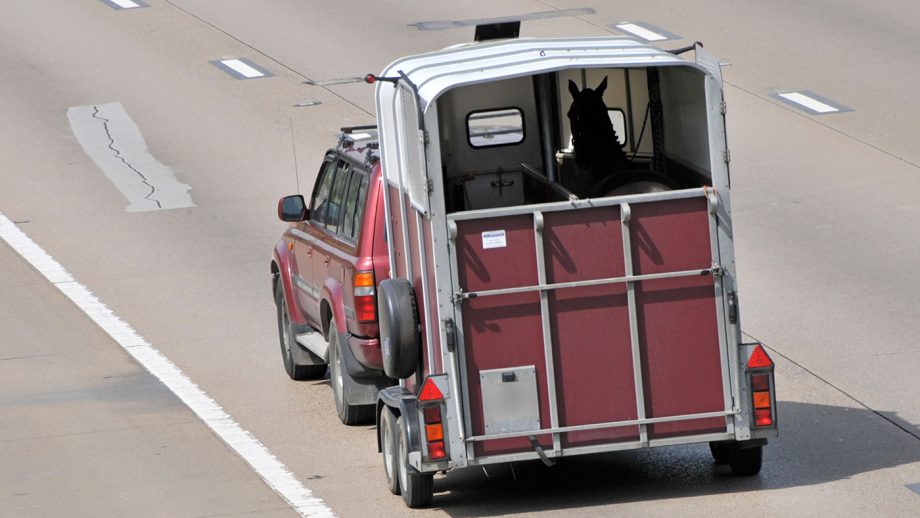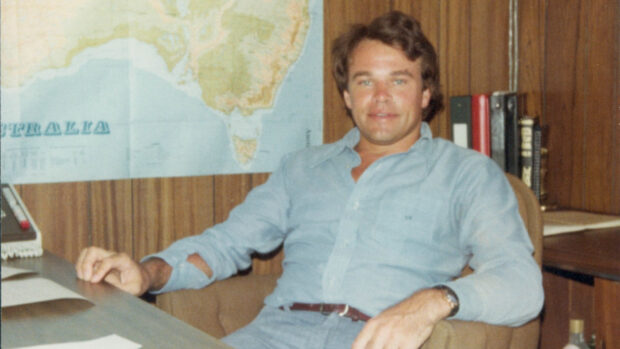Most people with a driving licence are allowed to tow a horse trailer without having to sit an extra test, but H&H recommends that anyone without practical towing experience undertakes professional training to ensure they can give their horse the most comfortable journey so everyone arrives safe and relaxed at their destination.
Being able to tow your horse opens up a wide range of opportunities from travelling to lessons, competitions and events to being able to get your horse to a vet in an emergency.
However, it’s easy to forget how unnatural travelling is for your horse, so understanding how they travel and what their preferences are will help you give him the best possible ride.
Trailers offer a variety of travelling positions including front-facing, rear-facing and herringbone (diagonal), but the jury’s out on a definite favourite.
“There have been a few studies where horses have been travelled loose, allowing them to choose which position they travel in, and what these studies consistently showed was that some horses prefer to face forward, some prefer facing backwards and some stand herringbone,” explains scientist Dr David Marlin. “One big consistency is that we never see them standing side-on, and there is a small preference for rearward facing.”
We know that horses spend a lot of time balancing themselves in transit, making a trailer journey fairly demanding.
“If we look at videos of horses being ‘trailered’, what we see is that they are making a lot of adjustments with their feet which uses up energy,” says David. “One study that showed that the energy expended by a horse during travel is somewhere between walking and trotting, so they are using up a lot of energy through postural muscles maintaining their balance and position.”
Based on this, horses may need some time to recover from a journey before competing.
“When it comes to the length of recovery time after a trailer journey, it depends on the length of the journey,” says David. “If you were doing an eight- to 10-hour journey, I’d suggest at least an overnight stay to help the horse recover. However, travelling just three or four hours but on windy roads, and on a hot day, could take the edge off your horse competitively. Nobody ever says that their horse jumped badly because he was tired from travelling. It’s not something people consider.”
For shorter journeys of under three or four hours, allowing an hour or three before they compete isn’t going to make a lot of difference.
“What you really want is for them to have a drink, cool off and relax before competing, but they won’t fully recover the energy they used during travel unless they are rested overnight,” says David. “Therefore, if you are competing in an important event and you want your horse on top form, I’d recommend giving your horse at least a day to recover.”
A variety of factors
How good a ride your horse has in the trailer depends on a variety of factors.
“It’s worth considering things such as your horse’s previous travel experience, whether he is happy or stressed on his own, whether you are on straight, good-quality roads or whether you’re on bumpy roads with lots of corners, how well you drive, the suspension on the trailer, how much other traffic is on the road, the noise, the heat – there are so many factors that can influence the quality of the ride for the horse,” says David.
“There will be some horses who don’t like facing backwards, but if we’re going on a combination of science and practical experience, and listening to what horse owners say, the starting point would be travelling backwards, with forage and a companion, and driving as carefully as possible on the best roads possible.”
It’s often clear when a horse hasn’t travelled well. “If a horse spends a lot of time vocalising, kicking the trailer, is covered in sweat, won’t eat or drink, and has loose droppings, they clearly don’t enjoy travelling,” says David. “That’s when you should consider what’s best for your horse and whether a change of travel position, addition of a companion or change in driving style would be beneficial.”
Horse comfort
Trailer layout can play an important role in your horse’s comfort.
“As prey animals, horses are naturally claustrophobic, and since most traditional horse trailers have a narrow rear ramp and a dark interior, resistance when loading is quite reasonable when your horse’s instinct is telling to avoid dark and enclosed spaces,” explains Tom Janion, managing director of Equi-Trek. “There are a few design options to help reduce stress. For example, full-height ramps provide a shallow and more inviting ramp angle while ensuring there is not too great a step on to the ramp itself. In addition, safety doors on either side of the ramp will help to guide the horse up and into the vehicle, preventing them from stepping off the side of the ramp and reducing the possibility of injury.”
Side-loading trailers with low, wide ramps and windows all around increase the feeling of internal space.
“This helps to make loading easier and safer as the horse is encouraged to enter a light, spacious area with less feeling of confinement,” adds Tom. “A side-ramp which is situated on the offside of the vehicle is also preferable because it ensures the handler remains between the horse and the exit at all times. This reduces the risk of being trapped.
Also, unloading the horse is made easier because the horse exits the trailer by walking forwards, eliminating the need to turn in a tight space.”
Travelling horses facing forward, backward or angled depends on your individual horse, and although research does point to some horses preferring to travel facing backwards, some prefer travelling herringbone.
“We find diagonal-loading trailers are often used by individuals who really struggle to travel their horses using straight-loading,” explains Alice Roberts of Cheval Liberté UK.
“This is because diagonal-facing tends to be more spacious and allows horses to ride more comfortably due to more room to move their legs apart and balance, therefore taking pressure off their joints.”
It’s also worth considering the trailer’s suspension.
“In terms of ride, look for trailer ranges which offer a car-like suspension, such as those consisting of four galvanised steel independent articulated arms with four torsion springs and four dampers [independent suspension],” adds Alice. “Not only does this allow for low riding height, but it also absorbs imperfections in the road, significantly reducing interior noise and movement, meaning a calmer environment for the horse.”
A smooth and comfortable journey
Ensuring your horse has a smooth and comfortable journey will not only help prevent injury, but good experiences will also mean he’s more likely to load again next time. Here, Equine Rescue Services’ Chris Facer offers his advice for towing horses:
- Plan your route to avoid busy spots and bumpy, windy roads where possible, and work out where to stop if your journey is more than three or four hours long.
- The maximum speed to tow a horse trailer is 50mph on single carriageway and 60mph on dual carriageways and motorways, but always drive at a speed that is safe for the road conditions.
- Be mindful of your braking distances and how hard you brake. You should brake slowly and carefully so as to not cause your horse to lose balance. Always accelerate gradually, too.
- Consider how fast you take corners. A good way to monitor your cornering is to place a bottle of water in the footwell of the passenger’s seat — if it falls over, you are going too fast.
- Stop every few hours to check on your horse and offer water. If it’s a particularly long journey, allow your horse a break from travelling — pull into a service station, unload and walk your horse to stretch his legs.
- Where possible, avoid travelling in rush hour where you are likely to be stationary for long periods, especially during hot weather.
- Rug your horse for the weather and temperature. A wicking, breathable rug will help prevent sweating.
- Give your horse enough time to recover from travelling before being exercised, and similarly, enough time to cool down and recover from exercise before travelling. Each horse is different but 45-60 minutes is a good starting point.
- Ensure your trailer is well ventilated.
- If travelling in the dark, ensure the light inside the trailer is on as this reduces the glare from vehicle lights outside.
You may also enjoy reading…

Horsebox versus horse trailer – which would suit you best?

Owning versus hiring horse transport: what are the pros and cons?

Subscribe to Horse & Hound magazine today – and enjoy unlimited website access all year round
Horse & Hound magazine, out every Thursday, is packed with all the latest news and reports, as well as interviews, specials, nostalgia, vet and training advice. Find how you can enjoy the magazine delivered to your door every week, plus options to upgrade your subscription to access our online service that brings you breaking news and reports as well as other benefits.




